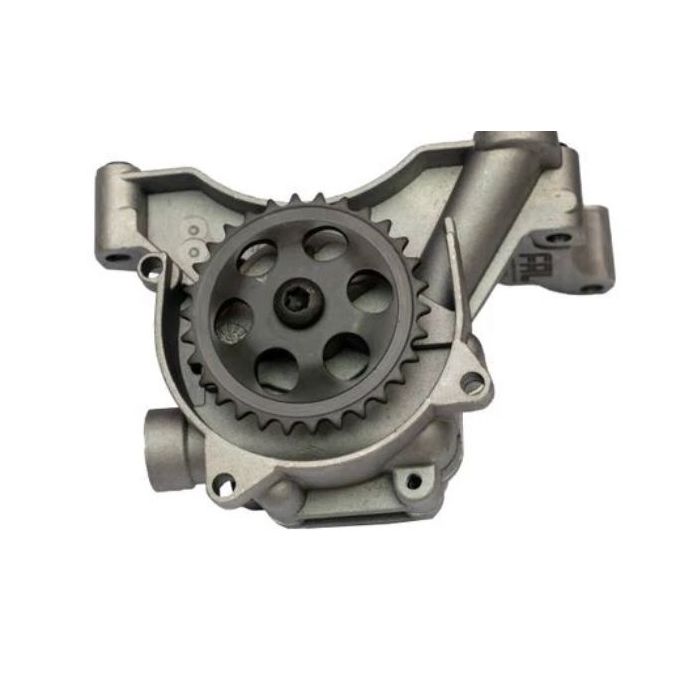Reduce downtime by using a well-maintained clp engine.
Just How a Clp Engine Can Enhance Efficiency in Numerous Industries
The development of CLP engines marks a substantial change in operational performance across numerous markets, driven by their ability to maximize fuel consumption and minimize downtime. Industries such as manufacturing and logistics stand to obtain considerably from their durable design and constant power result, which promise to enhance operations and boost productivity. As companies increasingly focus on sustainability alongside effectiveness, the role of CLP engines ends up being much more crucial. What stays to be seen is how these developments will certainly shape the future landscape of industrial operations and their impact on broader economic patterns (clp engine).
Overview of CLP Engines
CLP engines, or Continuous Liquid Propellant engines, represent a substantial advancement in propulsion modern technology, specifically for area applications. These engines utilize a continual feed system that enables the sustained expulsion of propellant, leading to boosted effectiveness and performance contrasted to standard solid or hybrid propulsion systems. By maintaining a consistent flow of fluid propellant, CLP engines can accomplish much more specific drive control, which is essential for steering spacecraft in different mission circumstances.
The style of CLP engines integrates sophisticated materials and cutting-edge fuel monitoring systems. clp engine. This results in lowered weight and boosted dependability, essential aspects for long-duration space goals. Additionally, the continual operation lessens the risk of burning instability, a common difficulty in standard rocket engines.

Advantages in Production
The production of Constant Liquid Propellant (CLP) engines provides a number of significant advantages that boost both performance and cost-effectiveness. One of the main advantages is the streamlined manufacturing procedure, which minimizes the complexity connected with conventional propulsion systems. By utilizing fluid propellant, suppliers can accomplish higher precision in engine performance, leading to maximized power outcome and decreased waste.
Additionally, CLP engines facilitate a greater level of modularity, permitting for less complicated combination right into different manufacturing lines. This flexibility can dramatically decrease lead times and improve general operational flexibility. The usage of CLP modern technology also has a tendency to decrease the requirement for extensive maintenance due to less relocating parts, which translates into minimized downtime and operational prices.

Applications in Logistics
Leveraging Constant Liquid Propellant (CLP) engines in logistics provides considerable advantages in operational efficiency and reliability. These engines offer a robust service for various transportation needs, enabling the smooth activity of items throughout huge distances. The intrinsic style of CLP engines permits consistent power output, which converts right into smoother and a lot more predictable transportation schedules.
Among the vital applications of CLP engines in logistics remains in durable freight transportation, where they can drive both ground and aerial lorries. Their capacity to preserve high performance under varying lots conditions guarantees that delivery timelines are fulfilled, consequently improving customer satisfaction. In addition, CLP engines can be integrated into automated logistics systems, promoting real-time monitoring and optimizing course planning.
Furthermore, the resilience of CLP engines lowers upkeep downtime, allowing logistics firms to maximize his response their operational abilities. This is especially beneficial in warehousing procedures, where efficiency in taking care of and delivering goods is essential. As logistics continues to evolve, the assimilation of CLP engines represents a forward-thinking strategy that check out here not only improves efficiency but additionally supports the market's growing demands for reliability and rate.
Impact on Power Efficiency
How do Constant Liquid Propellant (CLP) engines enhance power performance in transportation? CLP engines make use of a regular circulation of liquid gas, enhancing combustion procedures and maintaining a secure drive outcome. This style lessens energy losses connected with typical combustion engines, where gas delivery can vary and result in ineffectiveness.
The constant procedure of CLP engines enables a more reliable thermal cycle, resulting in higher particular impulse contrasted to traditional engines. clp engine. This equates to lowered gas intake for the exact same quantity of work done, significantly why not find out more reducing operational prices across numerous transport fields, consisting of air travel and maritime markets
Additionally, the capacity of CLP engines to maintain optimal performance under differing lots conditions decreases the demand for constant acceleration and slowdown, better improving fuel efficiency. Improved power performance not just adds to cost savings however also brings about lower greenhouse gas exhausts, lining up with international sustainability objectives.
Future Trends and Innovations
Arising advancements in Continual Liquid Propellant (CLP) engine technology promise to revolutionize the landscape of transport effectiveness and sustainability. As markets pivot towards greener choices, CLP engines stand at the center, integrating cutting-edge products and design methods that improve efficiency while lessening environmental impact.
One of one of the most appealing fads is the fostering of crossbreed systems that incorporate CLP engines with renewable resource resources. This harmony can maximize fuel intake and decrease emissions, straightening with global sustainability goals. Developments in computational liquid characteristics (CFD) are helping with the design of more aerodynamically reliable engines, leading to lowered drag and enhanced fuel effectiveness.
Furthermore, the development of smart tracking systems is readied to boost functional performances. These systems utilize information analytics and IoT innovation to maximize engine performance in real-time, making certain that the engines operate within their most reliable parameters.
As study remains to check out different propellant solutions-- such as biofuels and synthetic gas-- the future of CLP engines looks promising. By using these technologies, markets can not only enhance their efficiency but also add dramatically to a cleaner, much more sustainable future in transport.
Conclusion
To conclude, CLP engines represent a considerable improvement in performance across multiple industries. Their capacity to enhance gas usage and decrease operational costs, integrated with a constant feed system, enhances power outcome and operational reliability. The assimilation of sophisticated products and fewer relocating parts lessens upkeep demands, while positioning with sustainability goals placements CLP engines as a crucial modern technology for the future. Proceeded innovation in this field promises additional enhancements in performance and ecological performance.